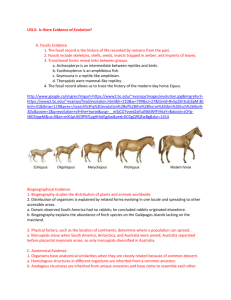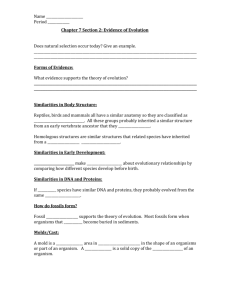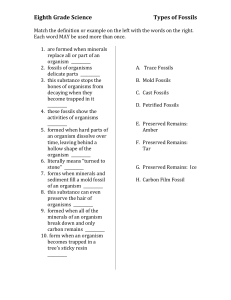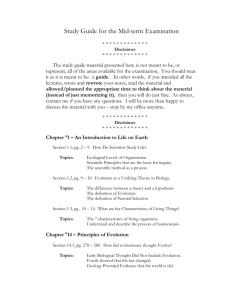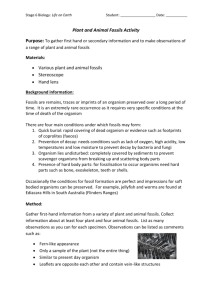2013年1月12日托福写作真题回忆
advertisement
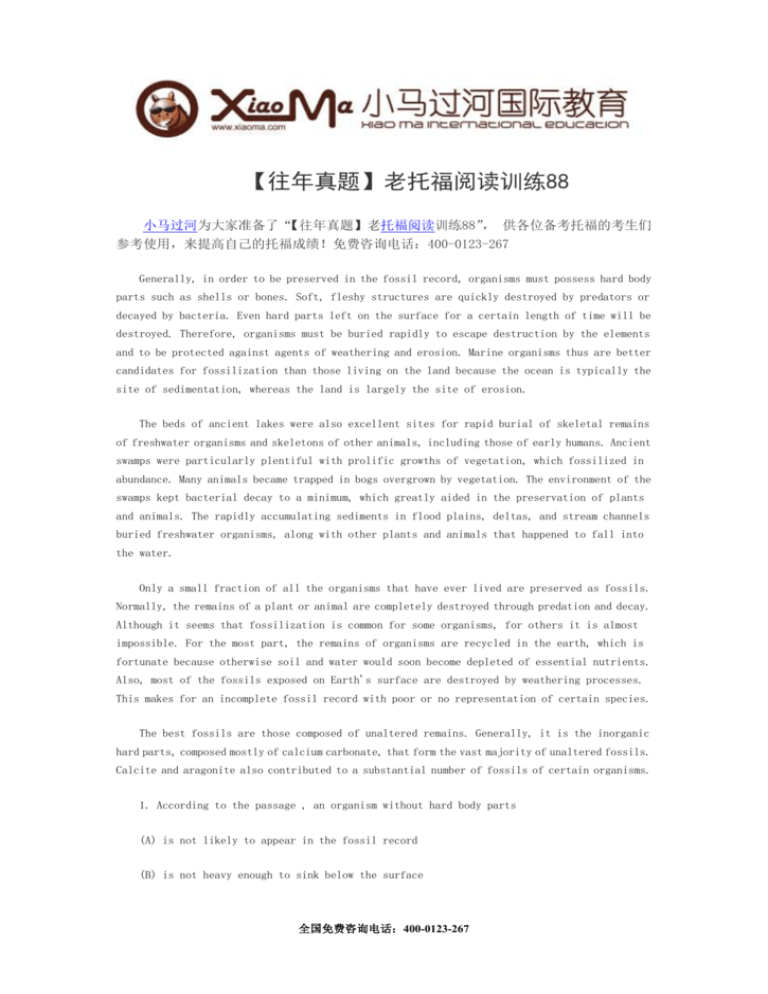
【往年真题】老托福阅读训练88 小马过河为大家准备了“【往年真题】老托福阅读训练88” , 供各位备考托福的考生们 参考使用,来提高自己的托福成绩!免费咨询电话:400-0123-267 Generally, in order to be preserved in the fossil record, organisms must possess hard body parts such as shells or bones. Soft, fleshy structures are quickly destroyed by predators or decayed by bacteria. Even hard parts left on the surface for a certain length of time will be destroyed. Therefore, organisms must be buried rapidly to escape destruction by the elements and to be protected against agents of weathering and erosion. Marine organisms thus are better candidates for fossilization than those living on the land because the ocean is typically the site of sedimentation, whereas the land is largely the site of erosion. The beds of ancient lakes were also excellent sites for rapid burial of skeletal remains of freshwater organisms and skeletons of other animals, including those of early humans. Ancient swamps were particularly plentiful with prolific growths of vegetation, which fossilized in abundance. Many animals became trapped in bogs overgrown by vegetation. The environment of the swamps kept bacterial decay to a minimum, which greatly aided in the preservation of plants and animals. The rapidly accumulating sediments in flood plains, deltas, and stream channels buried freshwater organisms, along with other plants and animals that happened to fall into the water. Only a small fraction of all the organisms that have ever lived are preserved as fossils. Normally, the remains of a plant or animal are completely destroyed through predation and decay. Although it seems that fossilization is common for some organisms, for others it is almost impossible. For the most part, the remains of organisms are recycled in the earth, which is fortunate because otherwise soil and water would soon become depleted of essential nutrients. Also, most of the fossils exposed on Earth's surface are destroyed by weathering processes. This makes for an incomplete fossil record with poor or no representation of certain species. The best fossils are those composed of unaltered remains. Generally, it is the inorganic hard parts, composed mostly of calcium carbonate, that form the vast majority of unaltered fossils. Calcite and aragonite also contributed to a substantial number of fossils of certain organisms. 1. According to the passage , an organism without hard body parts (A) is not likely to appear in the fossil record (B) is not heavy enough to sink below the surface 全国免费咨询电话:400-0123-267 (C) is not attractive to predators (D) takes a long time to decay 2. The word "agents" in line 5 is closest in meaning to (A) dangers (B) examples (C) areas (D) causes 3. Why are marine organisms good candidates for fossilization? (A) They have more fleshy structures than land organisms. (B) It is likely that they will be buried rapidly. (C) The water environment speeds the decay caused by bacteria. (D) It takes longer for them to be preserved. 4. The fact that the "land is largely the site of erosion" (line 7 - 8) is significant because (A) erosion is less destructive than sedimentation. (B) fossils are most common in areas subject to erosion. (C) erosion contributes to the destruction of skeletal remains. (D) few organisms live in areas that experience extensive erosion. 5. According to the passage , why were the remains of organisms trapped in swamps better preserved for the fossil record than those that were not? (A) The swamp environment reduced the amount of bacterial decay. (B) Swamp waters contained higher amounts of materials such as calcium carbonate. (C) There were fewer sediments in swamps than in other bodies of water. 全国免费咨询电话:400-0123-267 (D) Swamp vegetation accelerated the decomposition of organisms. 6. The word "aided" in line 13 is closest in meaning to (A) reversed (B) helped (C) reformed (D) counted 7. It can be inferred that flood plains, deltas, and stream channels (lines 14 - 15) are similar in which of the following ways? (A) Animals rather than plants have been preserved at such locations. (B) Such locations are likely to be rich sources of fossils. (C) Fossilized human remains are only rarely found in such locations. (D) Rapid sedimentation in such locations makes it difficult to locate fossils. 8. What is the author's main point in paragraph 3? (A) Weathering makes it impossible to identify many fossils. (B) Many fossils have been buried forever under the soil. (C) Fossils provide a limited sample of ancient organisms. (D) It is easier to find the remains of plants than animals. 9. Why does the author mention "aragonite" in line 27 (A) To explain why fossils are rare (B) To compare aragonite fossils and calcite fossils (C) To argue that certain fossils are more informative than others (D) To illustrate the kinds of inorganic hard parts that can form fossils 全国免费咨询电话:400-0123-267 来源于:小马过河 相关推荐: 托福阅读常出现的9个深度句 托福阅读利剑之语法 托福阅读解题方法之《主旨题》 全国免费咨询电话:400-0123-267

